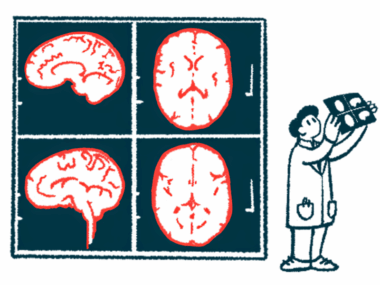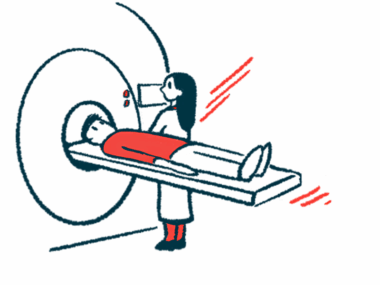Early MS MRI markers linked to worse disability in 10 years time
Scans at onset may help predict later disease severity, study finds
Written by |

MRI scans of the brain acquired early on after the onset of multiple sclerosis (MS) may help predict disease severity and disability accumulation after 10 years, a new study found.
In particular, there were two MRI biomarkers — inter-caudate diameter (ICD) and third ventricular width (TVW) — detected in imaging scans that were significantly linked to worse long-term disability.
“Despite advances in brain imaging and computerised … analysis, ICD and TVW remain relevant as they are simple, fast and have … potential in predicting long-term disability,” the researchers wrote, while noting that more advanced measures may be needed to predict disability progression with greater accuracy.
Even with “the statistical significance of these measures, the clinical utility is still not reliable,” the team wrote.
The study, “Predictors of long-term disability in multiple sclerosis patients using routine magnetic resonance imaging data: A 15-year retrospective study,” was published in the Neuroradiology Journal.
2 MRI biomarkers in early MS linked to long-term disability
MS is an autoimmune disease that occurs when the body’s immune system causes damage to myelin, a fatty substance that acts as insulation around nerve fibers. Without myelin, communication between nerve cells becomes slower and faulty, bringing about a variety of symptoms.
Getting an MRI scan is usually part of the diagnostic workup for people who are suspected of having MS. MRI can produce detailed images of the brain and spinal cord, where damage to myelin will show up as white matter lesions, also known simply as lesions. The presence of multiple lesions in distinct regions of the brain and spinal cord can confirm a diagnosis of MS.
Besides the number of lesions, there are other measurements that also can help track disease progression and response to MS treatments. Knowing from early on which patients are at high risk of progressing faster through the course of disease could help doctors better choose treatments for them.
“Early identification of patients at high risk of progression could help with a personalised treatment strategy,” the researchers wrote. However, not all measurements are easily applicable to clinical practice.
Now, a team of researchers in the U.K. looked at MRIs taken within the first five years after an MS diagnosis to determine whether any specific measurement from these scans could foretell progression a decade later.
The study drew on data from 82 people with relapsing-remitting MS who had at least two MRI scans available — one shortly after diagnosis and another taken after 4-6 years — and who were followed for 10 years or longer. The participants included 53 women and 29 men, with a mean age of 35.4.
On average, patients were followed for 12.1 years. Their first MRI scan was acquired a median of three months after disease onset, with the second done a mean of 5.33 years later. During follow-up, it was found that 12 patients had progressed to secondary progressive MS, a form of MS that continuously progresses even in the absence of relapses.
In this population, Expanded Disability Status Scale (EDSS) scores, a measure of disability, worsened from a mean 1.95 points at the study’s start (baseline), indicating minimal disability, to a mean 4.48 points after 10 years, indicative of significant disability.
Almost two-thirds of patients (62%) reached an EDSS score of four points at the last visit — meaning they had relatively severe disability but were able to walk without an aid for 500 meters (about 1,640 feet). EDSS scores reached 6 points in more than 37% patients, indicating they required a cane or crutch to walk 100 meters.
The mean number of lesions increased over time from 15 at baseline to 25 at the second MRI scan, with patients developing on average 1.1 new lesions per year. Lesion volume also increased over time.
However, neither the number of lesions nor their volume was linked to clinical disability after 10 years. In turn, the researchers found that both ICD and TVW, two measures that help track brain atrophy, significantly correlated with EDSS scores at the last visit.
The use of more advanced MRI biomarkers, and especially the integration of these measures in prediction modelling using artificial intelligence platforms … could possibly improve in the future this prediction ability.
The ICD measures the distance between the heads of the caudate, a C-shaped structure in the brain, whereas the TVW measures how wide is the third ventricle, one of the four cavities in the brain that are filled with cerebrospinal fluid. Results showed that the larger the ICD and TVW, the worse the disability accumulated 10 years after disease onset.
Statistical analysis, however, showed that both ICD and TVW identified patients who would reach an EDSS of six with an accuracy of 62%, suggesting that “the predictive value of brain … atrophy alone from routine MRI scans may be not enough if used as the sole predictor of outcome,” the team wrote.
“The use of more advanced MRI biomarkers, and especially the integration of these measures in prediction modelling using artificial intelligence platforms … could possibly improve in the future this prediction ability,” the researchers concluded.






